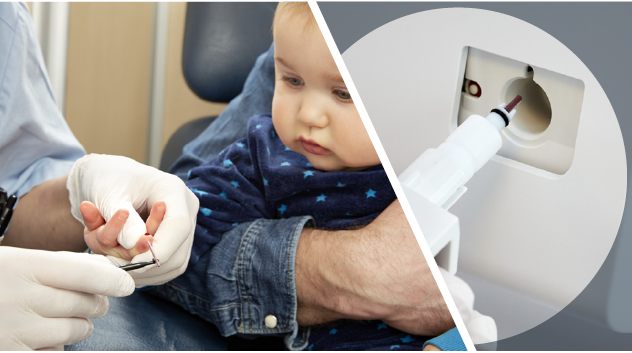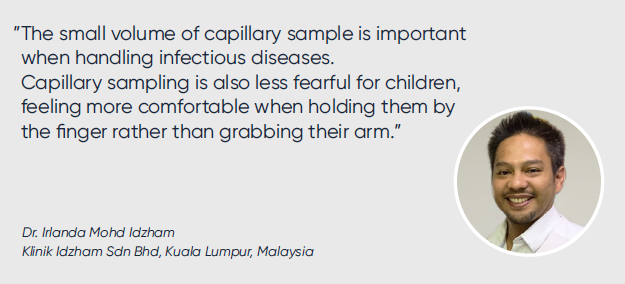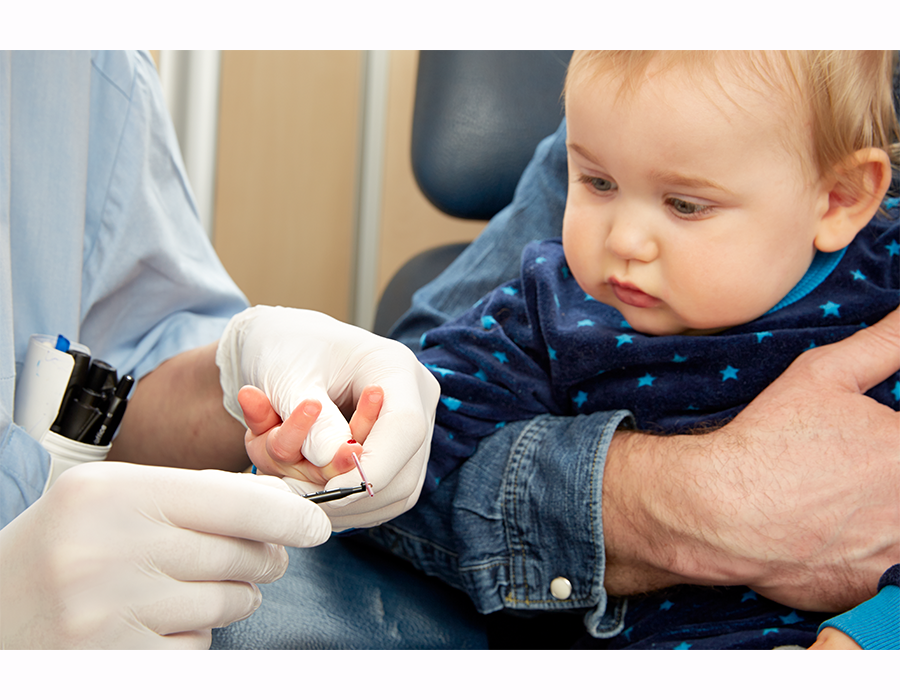Identification and management of anemia in children
The prevalence of anemia in children in the age from six months to five years was almost 40% in 2019, with more than 60% of children in this age group suffering from anemia in the African region (1). In children, anemia is associated with poor cognitive and motor development (1, 2).
Studies on iron supplementation
The most common cause of anemia is iron deficiency (2). McCann and colleagues at the Dept. of Women and Children’s Health, King’s College London, London, UK used the Medonic M-series M32 hematology system to identify anemia in children in rural Gambia, from which capillary (1 and 8 months of age) or venous (5 and 12 months of age) blood samples were collected (3). Iron deficiency was investigated using three individual biomarkers, namely ferritin, soluble transferrin receptor, and hemoglobin concentrations. The results show an association of functional iron status (as determined by sTfR) with neurodevelopment during early infancy (0 to 6 months of age).
Armishty and coworkers at the Dept. of Clinical Sciences, College of Medicine, University of Zakho, Zakho, Kurdistan Region, Iraq used the Medonic M-series hematology system to identify anemia in children from six months to five years (4). They found anemia to be post prevalent in children younger than two years. Anemia was also found to be more prevalent in children with a history of breast-feeding, supposedly due to the lower iron content in breast milk than in artificial milk. The study also confirmed previous findings of a lower prevalence of anemia in children more often eating eggs and meat, supposedly due to the iron content of these foods.
A study by Hasnita and La Sakka at the Nani Hasanuddin College of Health Sciences, Makassar, Indonesia, using the Medonic M-series M32 hematology system , shows that iron supplements of pregnant women can help maximize brain growth and weight of the baby (5).
Taken together, these studies show that iron supplementation during pregnancy and early infancy, can yield neurodevelopmental benefits (3).
Automates hematology analysis in pediatrics
Children are among the most difficult patients from whom to collect blood samples. Of utmost importance is to consider the child’s physical and emotional well-being; yet ensuring safety and efficacy when collecting blood. Vein puncture can be both a traumatic and painful experience.
Compared with adults, pediatric patients have smaller veins and an excess of subcutaneous fat, making visualization and palpation of veins challenging in children (6). Analysis of capillary blood instead of venous blood can therefore be especially useful in pediatrics (Fig 1). A large part of the procedures in neonatal units are performed using capillary blood samples also to avoid effects of blood volume reduction and to reduce the risk of anemia (7, 8).


Learn more
Learn more about how Boule hematology analyzers support hematology analysis in children from the white paper Method for direct hematology testing of capillary blood facilitates analysis in children.
References
1. Anaemia in women and children. WHO Global Anaemia estimates, 2021 Edition. World Health Organization (www.who.int, accesses 2024-06-04).
2. Stevens et al. Global, regional, and national trends in haemoglobin concentration and prevalence of total and severe anaemia in children and pregnant and non-pregnant women for 1995–2011: a systematic analysis of population-representative data. Lancet Glob Health 1, e16–25 (2013).
3. McCann et al. Iron status in early infancy is associated with trajectories of cognitive development up to pre-school age in rural Gambia. PLOS Global Public Health doi.org/10.1371/journal.pgph.0002531 (2023).
4. Armishty et al. The Prevalence of Anemia and Associated Factors Among Children under 5 Years in Zakho City, Kurdistan Region, Iraq: A Cross-sectional Study. Passer 5, 398–404 (2023).
5. Hasnita and La Sakka. Effectiveness of iron administration (Fe tablets) on improvement hemoglobin (Hb) levels in pregnant women at Kapasa Health Center. Lantera Acitya Health Journal 10, (2023).
6. Scott-Warren, V.L. and Morley, R.B. Paediatric vascular access. BJA Education 15, 199–206 (2015).
7. Hjelmgren et al. Nurses’ experiences of blood sample collection from children: a qualitative study from Swedish paediatric hospital care. BMC Nursing 21, 62 (2022).
8. Lenicek Krleza et al. Capillary blood sampling: national recommendations on behalf of the Croatian Society of Medical Biochemistry and Laboratory Medicine. Biochemia Medica 25, 335–58 (2015).
